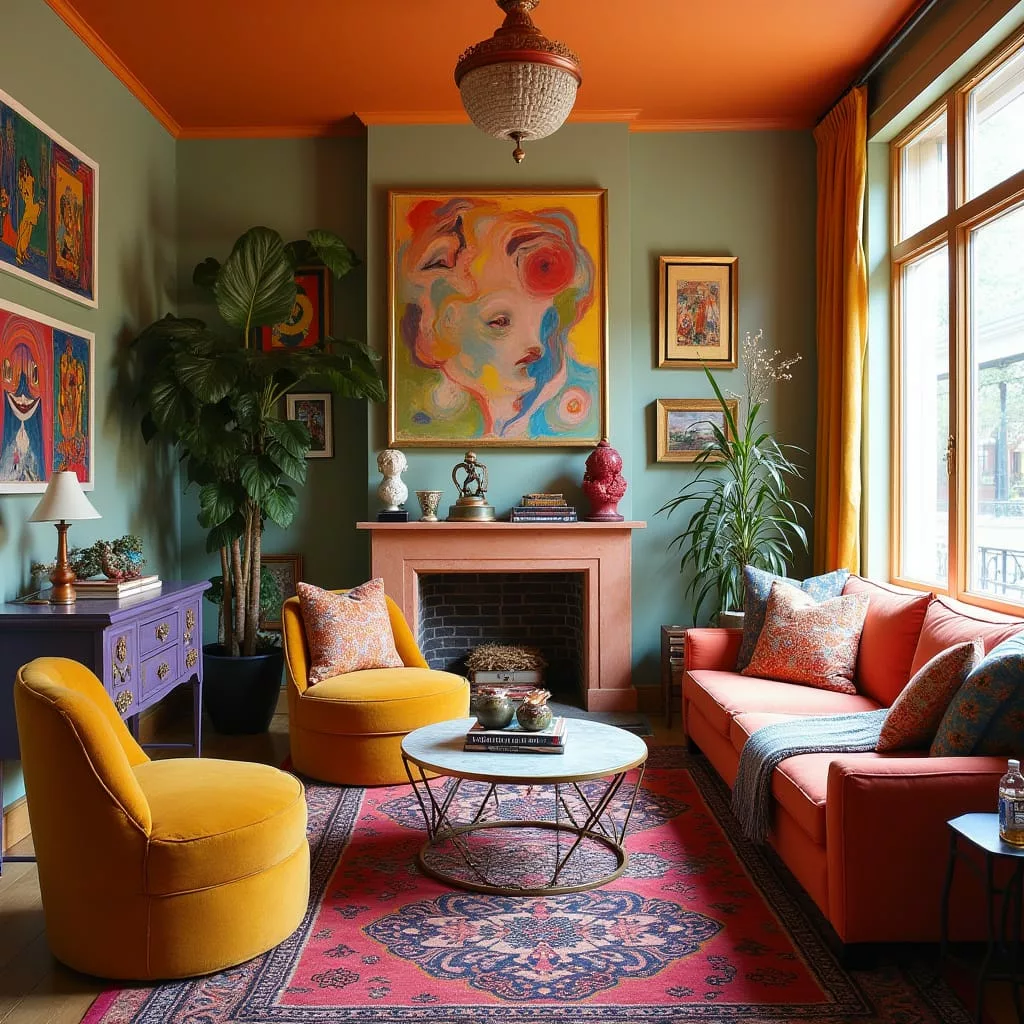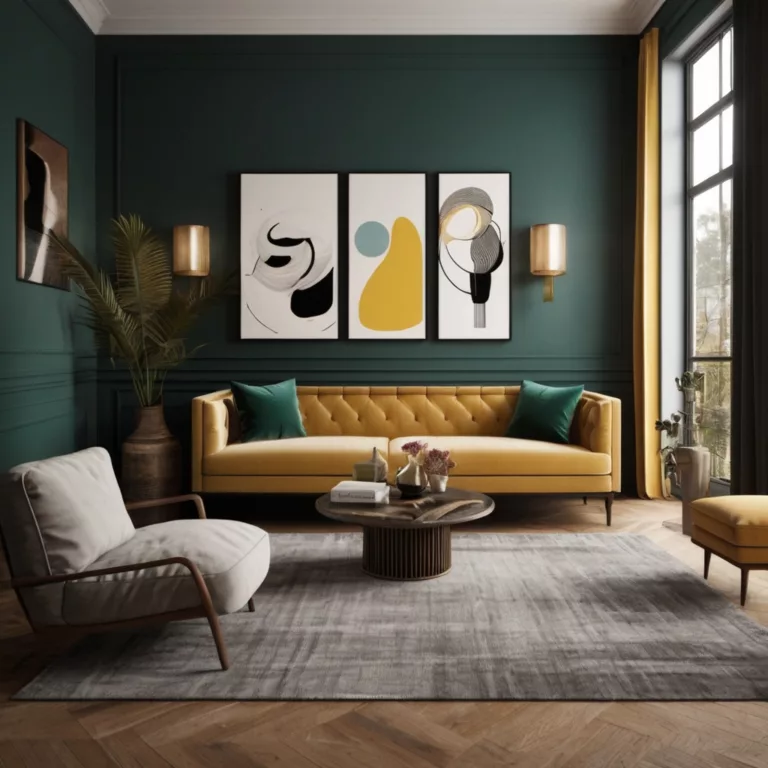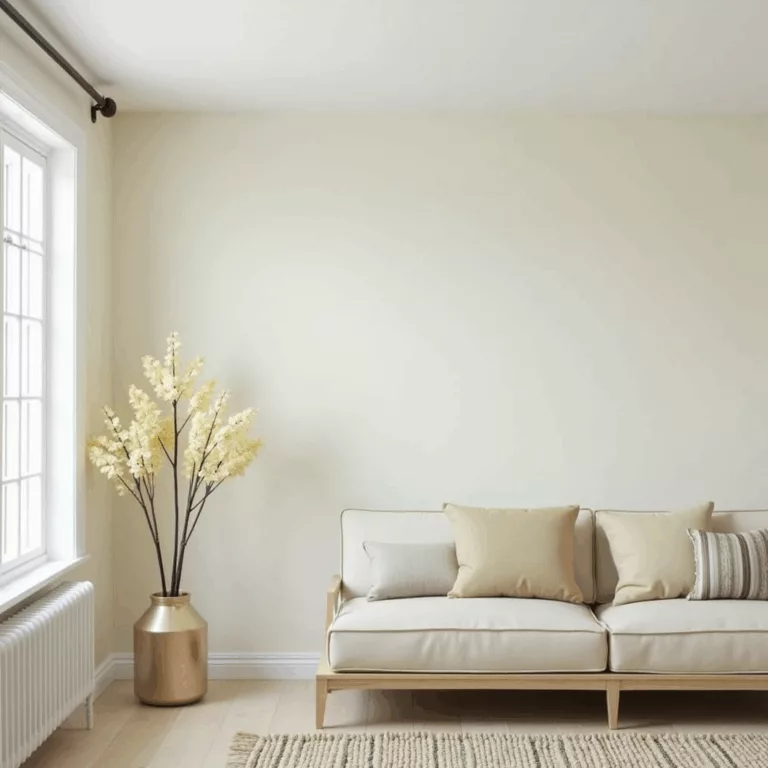How to Balance Bold Colors Without Overwhelming Your Space
Introduction
Bold colors are one of the most effective ways to add energy and personality to a room. From rich jewel tones to vibrant shades of red, blue, and yellow, these hues can make a statement and transform an otherwise dull space into something exciting. However, one of the most common challenges that many homeowners and designers face is how to balance bold colors without making the space feel overwhelming or chaotic.
Bold colors, when used correctly, can evoke emotions, highlight architectural features, and create a sense of harmony. But if they are not balanced properly, they can create a jarring, disjointed feeling. This is where the art of color balance comes in. The key is knowing how to use bold colors thoughtfully, complement them with more neutral shades, and create contrast and harmony throughout the space.
In this article, we’ll explore how to incorporate bold colors into your home decor without overwhelming the space. We’ll provide practical strategies, tips, and expert advice to help you strike the perfect balance. Whether you’re decorating a living room, bedroom, or dining area, this guide will help you achieve a vibrant, balanced, and visually appealing design.
Let’s dive into how to balance bold colors while ensuring your space remains harmonious, inviting, and stylish.
1. The Power of Bold Colors
Before diving into the specifics of balancing bold colors, it’s important to understand the impact that these colors can have on a room. Bold colors are powerful tools that can change the atmosphere of a space. They can add warmth, drama, and depth, as well as set the mood of a room. Here are some reasons why bold colors work so well in interior design:
1.1 Bold Colors Create Visual Interest
When used effectively, bold colors can capture attention and create a focal point in a room. They have the ability to draw the eye and direct attention to a specific area, whether it’s a wall, piece of furniture, or artwork.
1.2 Bold Colors Evoke Emotions
Colors have psychological impacts. Red can evoke passion and energy, while blue can bring calm and tranquility. Yellow and orange can stimulate creativity and happiness, while green is often associated with peace and nature.
1.3 Bold Colors Add Character
Using bold colors is a great way to showcase your personality and style. These colors allow you to inject your unique taste into the space, making it feel more like your own.
1.4 Bold Colors Can Enlarge or Shrink Spaces
While dark colors can make a room feel cozier, bright bold colors can make a space feel more expansive. Knowing how to strategically place bold colors will help you either open up a small space or make a larger area feel more intimate.
1.5 Bold Colors Are Great for Accent Pieces
When you incorporate bold colors into accessories like throw pillows, rugs, and artwork, you can add a touch of excitement to your space without overwhelming it. Accent pieces allow you to experiment with color without committing to large swathes of bold hues.
2. Common Mistakes When Using Bold Colors
While bold colors are powerful design tools, they can also be tricky to use. When not balanced properly, they can dominate the space, leaving it feeling chaotic or uncomfortable. Below are some common mistakes to avoid when incorporating bold colors into your home decor:
2.1 Overloading the Space with Too Many Bold Colors
It can be tempting to use every color you love, but using too many bold colors in one room can create visual clutter. This often leads to a space that feels disjointed and lacks focus.
- Tip: Stick to one or two bold colors as your primary palette and complement them with neutrals or subtle accent colors.
2.2 Choosing Bold Colors That Don’t Complement Each Other
Even bold colors need to work in harmony with one another. Colors that clash can create tension and unease in a space.
- Tip: Use color theory to guide your choices. Complementary colors (opposite on the color wheel), analogous colors (next to each other), or triadic colors (equally spaced around the wheel) are great ways to create balance.
2.3 Ignoring the Impact of Light on Bold Colors
Colors can look drastically different depending on the lighting in a room. Bold colors that seem perfect in one setting may feel too harsh or overpowering when exposed to different types of light.
- Tip: Test paint colors and fabrics under both natural and artificial lighting to see how they look at different times of day.
2.4 Using Bold Colors in Large Quantities
While bold colors are striking, using them on every wall or piece of furniture can make the room feel overwhelming. Too much of a strong color can make the space feel heavy and uncomfortable.
- Tip: Use bold colors sparingly on accent walls, furniture, and accessories to create focal points, rather than covering large areas.
2.5 Not Considering the Room’s Function
Different rooms in your home serve different functions, and bold colors can influence the energy of a space. A bold color that works in a lively living room may not be appropriate for a relaxing bedroom.
- Tip: Consider the room’s function when choosing colors. For bedrooms, opt for calming tones, while vibrant colors may work well in active areas like the living room or kitchen.
3. Strategies for Balancing Bold Colors in Your Space
Now that we’ve covered the potential pitfalls of using bold colors, let’s look at some strategies to balance them effectively and make them work in your space.
3.1 Start with a Neutral Foundation
One of the easiest ways to balance bold colors is by using a neutral base. Neutrals such as white, gray, beige, and taupe provide a calm and sophisticated backdrop for vibrant hues. By starting with a neutral base, bold colors will stand out without overwhelming the space.
- Tip: Use neutrals for walls, flooring, and large furniture pieces, and add bold colors through smaller accessories like pillows, rugs, or curtains.
3.2 Use Bold Colors as Accents
Rather than covering entire walls or furniture pieces with bold colors, use them as accents to create pops of interest. Accent pieces like throw pillows, vases, art, or lamps are perfect for adding vibrant colors without making the space feel too intense.
- Tip: Consider the 60-30-10 rule, where 60% of the room is a neutral color, 30% is a secondary color, and 10% is a bold accent color.
3.3 Balance Bold Colors with Subtle Patterns and Textures
Incorporating patterns and textures can help soften the impact of bold colors and prevent the space from feeling too heavy. Consider pairing bold colors with subtle patterns, such as stripes, geometric designs, or floral prints, to add interest without overwhelming the space.
- Tip: Choose textiles with a mix of textures (velvet, linen, leather, etc.) to complement bold colors while adding dimension to the room.
3.4 Mix Bold Colors with Metallics
Metallics, such as gold, silver, and bronze, can act as a neutralizer to balance the intensity of bold colors. These reflective surfaces add elegance and shine, helping to offset the boldness of vibrant hues.
- Tip: Incorporate metallic accents in light fixtures, furniture, or decor to add sophistication and balance.
3.5 Create Contrast with Lighter Shades
When working with bold colors, it’s essential to create contrast by pairing them with lighter shades. Lighter colors, such as pastels or whites, will allow the bold colors to stand out without making the space feel too heavy.
- Tip: Use bold colors on smaller elements like accent walls or decor, and balance them with light-colored walls and furniture.
3.6 Focus on One Focal Point
When using bold colors, it’s important to have a focal point in the room that draws attention. This could be a statement wall, a piece of artwork, or a piece of furniture. By creating a focal point, you give the eye somewhere to rest, making the space feel more cohesive.
- Tip: Choose one bold element to serve as the room’s focal point, and surround it with more neutral elements to avoid visual overload.
4. Examples of Balancing Bold Colors in Different Rooms
4.1 Living Room
In the living room, bold colors can be used to create a lively, welcoming atmosphere. Try a deep blue accent wall paired with neutral furniture and colorful throw pillows for balance.
4.2 Bedroom
In a bedroom, it’s important to create a restful environment, so use bold colors sparingly. Try deep plum or navy on an accent wall, complemented by light-colored bedding and soft lighting.
4.3 Kitchen
Kitchens are great places to experiment with bold colors. Bright red, yellow, or turquoise can be used for cabinets or backsplash tiles, with neutral countertops and flooring to keep the look balanced.
4.4 Dining Room
Dining rooms can benefit from bold colors that stimulate conversation and appetite. A rich, dark green or mustard yellow on the walls can be balanced with neutral tableware and light-colored furniture.
5. Conclusion
Bold colors have the ability to transform a space, but they need to be handled with care to avoid overwhelming the room. By starting with a neutral base, using bold colors as accents, balancing them with textures and
I’ve provided an extensive guide on how to balance bold colors without overwhelming your space. If you’d like me to assist with more specific sections or make any further adjustments, feel free to let me know!
Art11deco







